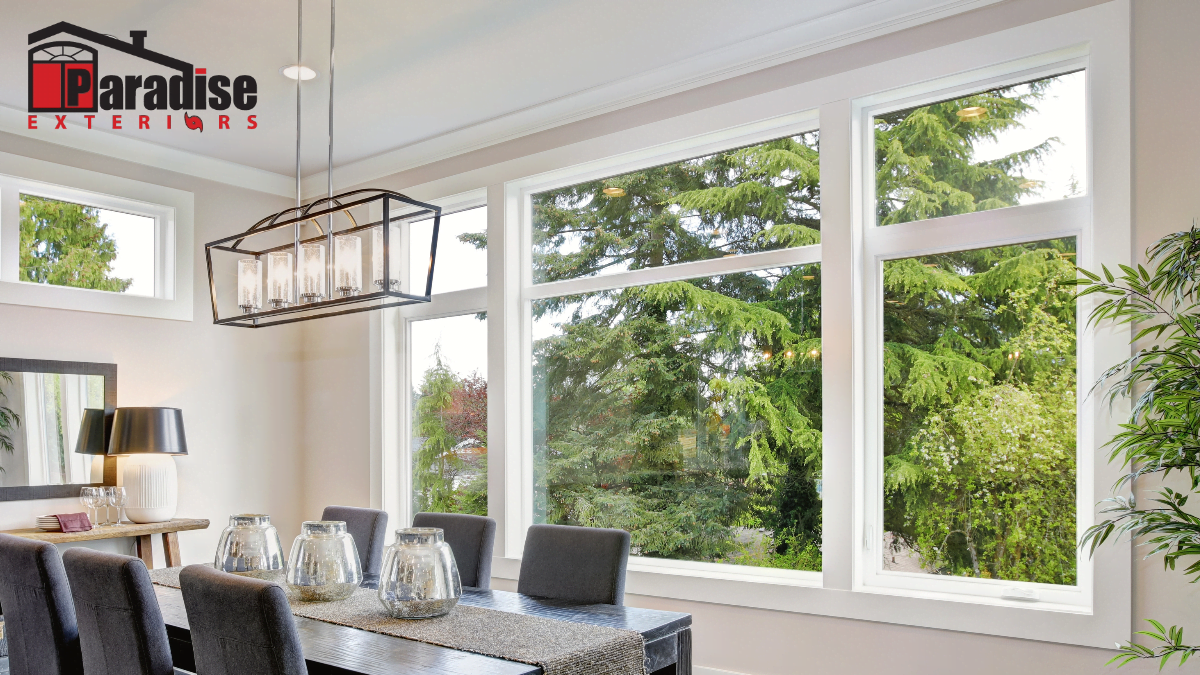Woodlands Window Replacement Solutions for Elegant Homes
Woodlands Window Replacement Solutions for Elegant Homes
Blog Article
Upgrade Your Home With Energy-Efficient Home Window Substitutes
In the realm of home improvement, the choice to upgrade to energy-efficient home window substitutes can substantially influence both the capability and aesthetic appeals of a residence. Beyond the surface area degree of simple aesthetic appeals, energy-efficient windows offer a wide variety of advantages that go past simple curb appeal.
Advantages of Energy-Efficient Windows

The setup of energy-efficient home windows gives considerable cost savings on utility expenses while improving environmental sustainability. Energy-efficient windows are developed to decrease heat loss and gain, lowering the demand for home heating and cooling down systems to burn the midnight oil. By effectively insulating the home, these home windows help preserve a comfortable indoor temperature level year-round, resulting in reduced energy consumption and reduced energy costs. In addition, energy-efficient home windows can assist control wetness degrees within the home, decreasing the threat of mold and mildew and mold growth.
Past the monetary advantages, energy-efficient home windows add to ecological sustainability by decreasing carbon emissions related to energy production. By lowering power use, these home windows assist reduce the environmental effect of home heating, air conditioning, and lighting property rooms. This reduction in power usage plays a critical function in combating climate change and promoting a greener future for generations to come. On the whole, investing in energy-efficient windows not only boosts the comfort and efficiency of a home however likewise aligns with ecologically conscious techniques.
Kinds of Energy-Efficient Glass
Various sophisticated sorts of energy-efficient glass offer unique residential or commercial properties that deal with different requirements and choices in improving the sustainability and performance of structures. Low-emissivity (Low-E) glass is a prominent option designed to lessen the amount of ultraviolet and infrared light that can pass via the glass, thereby minimizing warm transfer. This kind of glass helps maintain a regular indoor temperature, minimizing the requirement for heating or cooling systems, and ultimately lowering energy expenses. One more innovative option is spectrally careful glass, which enables visible light to pass with while obstructing specific kinds of infrared radiation. This assists in preserving a comfy interior environment while minimizing warm gain. Triple-pane glass, containing 3 layers of glass with shielding gas between them, provides enhanced thermal insulation, making it highly energy-efficient. Additionally, self-cleaning glass with an unique coating that breaks down and loosens up dust when exposed to sunlight can lower maintenance requirements and maintain home windows looking clean. Each sort of energy-efficient glass uses distinctive advantages, permitting property owners to choose one of the most ideal choice based upon their particular requirements and objectives.
Elements to Consider When Selecting
When considering energy-efficient window substitutes, it is essential to carefully assess specific variables that align with your sustainability objectives and desired power financial savings. The U-factor procedures how well the window protects, with lower numbers suggesting better insulation, while the SHGC suggests the window's capability to obstruct warm from sunshine. By thoroughly evaluating these factors, you can select energy-efficient home windows that improve convenience, minimize power costs, and profit the environment.
Setup and Upkeep Tips

Regular upkeep is key to protecting the efficiency of your energy-efficient home windows. Check the home windows occasionally for any kind of signs of sealant, wear, or damages degeneration. Clean the frames, tracks, and glass regularly using mild soap and water to get rid of dust and crud that can influence efficiency. Examine the weather-stripping and seals for any voids or rips and replace them if needed to keep the home windows' energy efficiency.
Additionally, lubricate moving components such as locks and hinges to ensure smooth operation. By complying with these installation and upkeep suggestions, you can enhance the power performance of your home and prolong the lifespan of your energy-efficient windows.
Cost-Benefit Evaluation of Upgrading

Energy-efficient windows are designed to reduce warm transfer, decreasing the demand for heating and cooling down systems to function overtime. This can bring about significant cost savings on energy costs, specifically in regions with extreme temperature levels. Furthermore, energy-efficient home windows can boost the general worth of your home, making it extra attractive to potential customers if you make a decision to market in the future.
When computing the cost-benefit analysis, factor in the potential financial savings on power expenses, any type of offered rewards or rebates, and the life-span of the home windows. While the first cost may be greater, the long-term financial savings and advantages of energy-efficient windows make them a wise financial investment for property owners seeking to improve their property's power performance and value.

Final Thought
In final thought, updating to energy-efficient window substitutes offers countless benefits such as decreased power consumption, enhanced comfort, and cost financial savings. By selecting the appropriate type of energy-efficient glass and thinking about aspects like frame product and installation, house owners can take full advantage of the efficiency of their home windows. Regular upkeep and correct setup are important for long-lasting performance. On the whole, the cost-benefit evaluation of upgrading to energy-efficient home windows shows that the first investment can result in significant financial savings over time.
When considering energy-efficient window replacements, it is crucial to meticulously assess details variables Katy window replacement that line up with your sustainability purposes and desired power cost savings. The U-factor actions just how well the home window protects, with reduced numbers suggesting much better insulation, while the SHGC suggests the window's ability to block warmth from sunlight. By carefully reviewing these variables, you can select energy-efficient home windows that boost convenience, lower power costs, and benefit the setting.
While energy-efficient home windows may have a higher in advance price compared to traditional home windows, the long-lasting benefits frequently outweigh the preliminary investment.In final thought, upgrading to energy-efficient home window replacements provides numerous advantages such as decreased power consumption, increased convenience, and cost savings.
Report this page